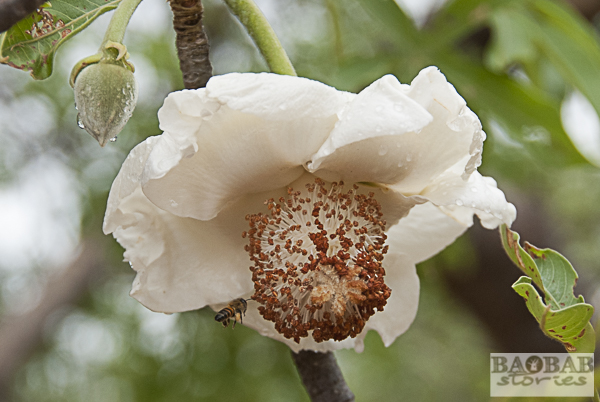
Baobab Flower with Bee
Every year at the beginning of the rainy season a very special spectacle of a silent kind takes place in the baobab kingdom. Dangling down from long strings baobab flowers open their buds. That comes with a very special feature: to open their flowers baobabs prefer the warm afternoon and evening hours. On large trees, hundreds of them unfold their petals synchronously and in seconds like small umbrellas.
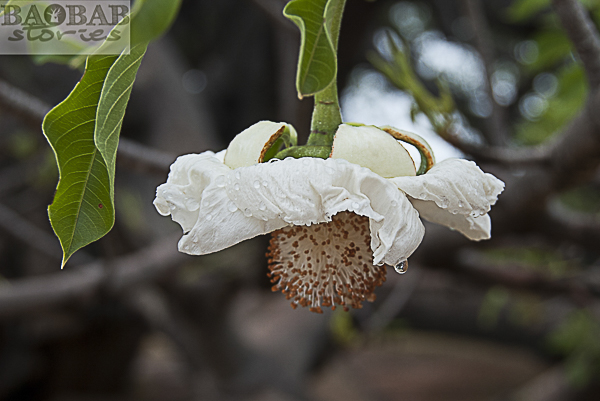
Baobab Flower
Beautiful for just one night
A blossom only blooms for one night – during this time the pollinators have to get active for for it to be able to produce fruit. Therefore it has to put something on offer to attract those potential pollinators. How does that work, and who actually takes care of pollination at night when the usual suspects like bees and beetles rest peacefully?

Baobab flower opening
Baobab flowers are pollinated at night
With the baobabs it is – depending on the region – a very special “crowd”: Bushbabies, hawkmoth and fruit bats take over this important task. Like many other flowers, those of the baobab also produce nectar and exude a seductive scent. In principle, this is no different from plants that flower during the day. However, the baobabs’ flowers have a special scent. In some places they are said to smell like carrion – anything but sweet and lovely. I can’t confirm that. In South Africa and Zimbabwe, I have experienced their scent as strong – but nothing compared to real carrion, which has started to decay and lay in the blazing heat of the savannah for days.
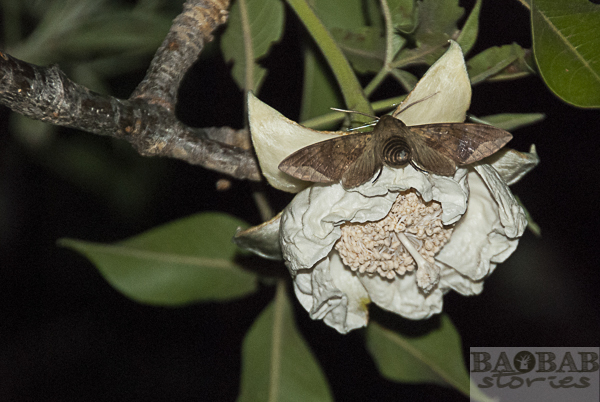
Baobab flower with hawkmoth
Baobab scent – a research
So what exactly attracts pollinators and is it comparable to other countries where baobabs are found? In order to find an answer to this question, Dr. Sarah Venter joined us on a trip to the Limpopo Province in South Africa. At the moment we have gathered underneath a big old baobab which we identified in the afternoon – taking a glimpse at its flowers now.
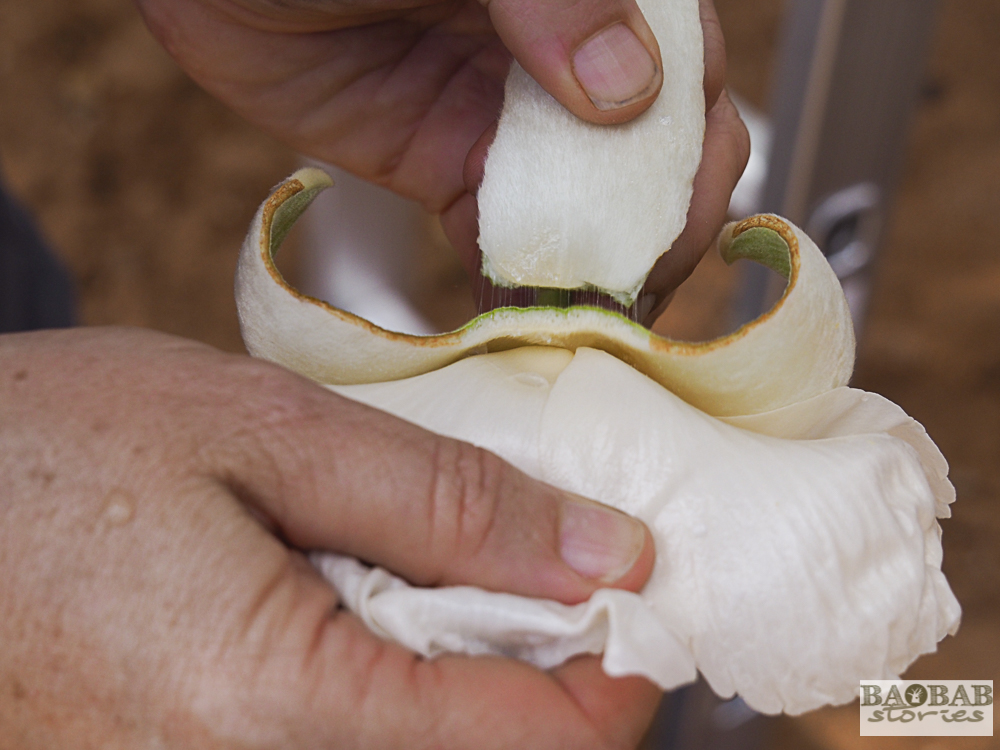
Nectar behind flower petals, Heike Pander
The Baobab of choice
We chose this specific tree because some of its flowers hang low enough so that we can still reach them with the help of a ladder. Meanwhile it is pitch dark in the countryside. A light rain is falling and the wind is gently blowing through the full canopy of leaves on the tree. The ladder stands ready under a freshly opened blossom. Noemie Bauer, who is also interested in this baobab project, climbs it courageously. She puts a bag over the blossom immediately and fastens it firmly with cable ties above the petals. No air must escape from the bag. All we can do now is wait.

Baobab taken for scent samples, Heike Pander
Capturing the scent of the baobabs
After an hour in the darkness – no star is visible, at least the rain has stopped – we take action again. Noemie climbs the ladder and cuts off a corner of the bag. She inserts a tube. Using a special device that works like a syringe, she draws air from the bag into a small container – and extracts the concentrated scent of the baobab flower, so to speak. She seals the container airthight and labels it for further examination in the laboratory. Scientists will compare their subsequent analysis results with scent samples from other locations.
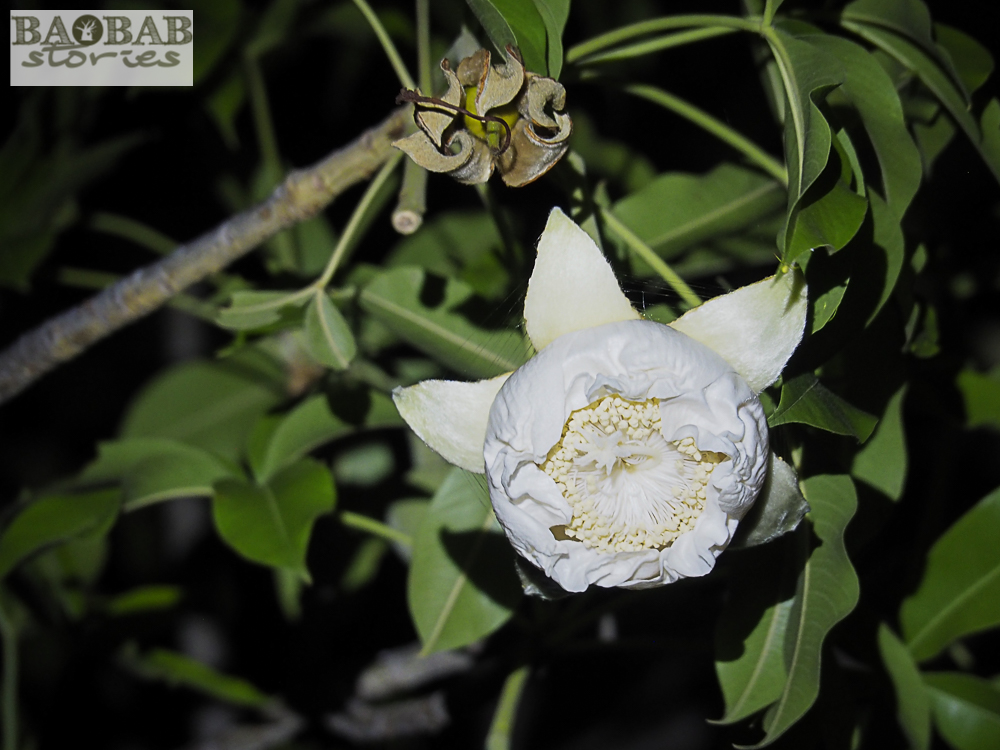
Newly opened baobab flower, Heike Pander
Investigating the behaviour of the pollinators
Information obtained in this way should help to better understand the behaviour of pollinators. Observations in recent years have shown that hawkmoths are mainly responsible for pollinating the flowers in the Limpopo Province. In other regions this important task is taken over by bats or bush babies.
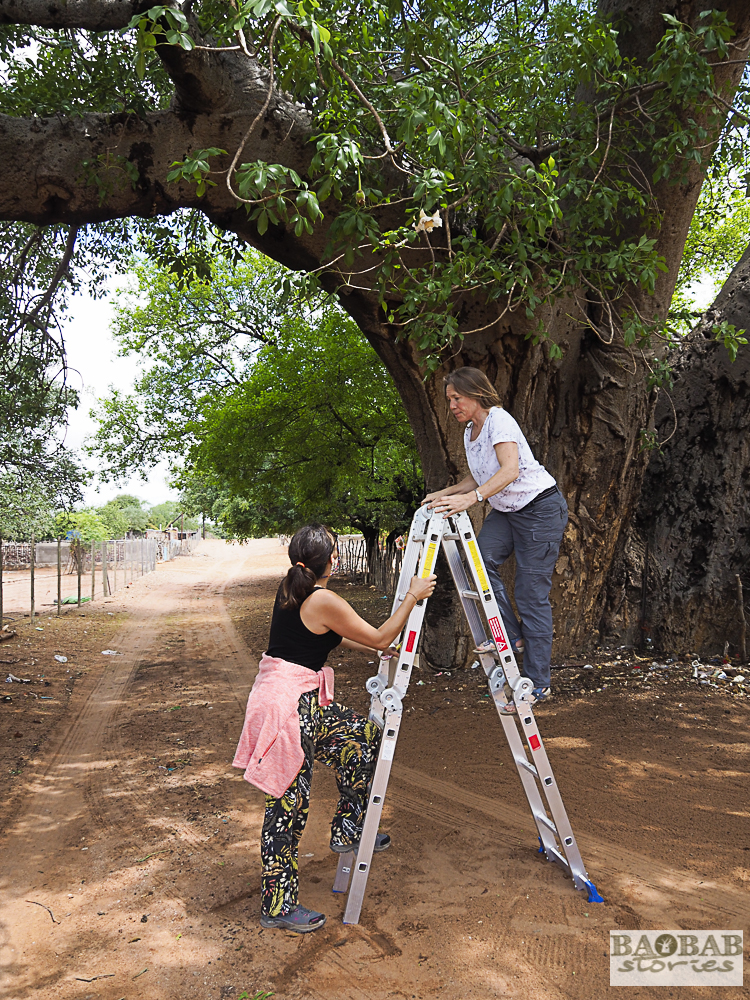
Dr. Sarah Venter taking flower sample for research, Heike Pander
Ensuring the survival of the baobabs
Ultimately, the researchers also expect the results to provide insights that will help to ensure that there will be baobabs in the years to come. If the behaviour of the pollinators is understood in a better way, their survival can be protected and supported. Which in turn benefits the baobabs. Their fate is connected to that of their pollinators: if their numbers dwindle, that of the baobabs will do so, too.

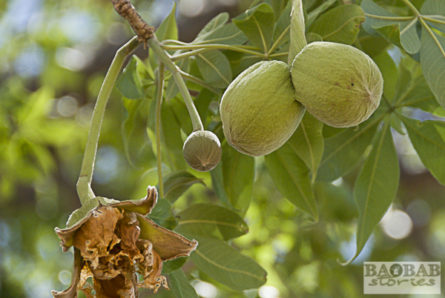


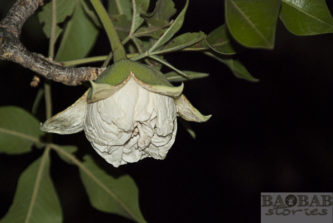

Such incredible advice from so many awesome sources! I love it!
Thank you for your positive comment & for visiting this site.
There are three primary kinds of baobab flowers: Annals, Perennials, and Biennials. In addition, there is the fourth type of smell baobab flower that behaves both in annuals and perennials like a hybrid
Hi there, thanks for sharing this information…
A wonderful blog with the best word choice that is totally informative for everyone.
Hi Bradley, thanks & all the best!
Such a beauty full post, I love this post thanks for sharing this wonderful post.
Thank you!
nice post this amazing
Thank you!
Amazing blog & phenomenal writting. It was truly informative, thank you for putting all the effort that you did in writting this exceptional blog!
Thank you very much for your kind words of appreciation!
Great Blog! The information article was very helpful, Thanks a lot for sharing this, I really appreciate it.
Thank you!
Your words evoke an expanse of emotions. Your unique insights add color to the discussion. Thank you for sharing your thoughts and contributing to this vibrant exchange.
Thank you for your appreciation!
Amazingly written!! Appreciated.
I loved reading about this tree. thanks for the education of it.
beautiful ❤️
Thank you!
Great work. It is very attractive topic and with detail. Keep it up
Thank you!